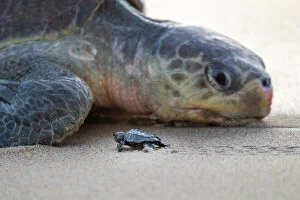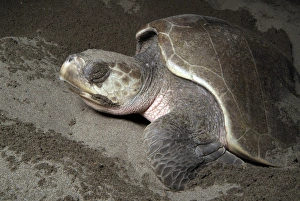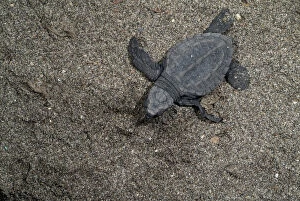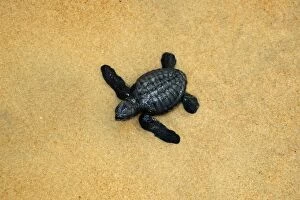Olive Ridley Collection
The Olive Ridley turtle, scientifically known as Lepidochelys olivacea, is a remarkable creature that captivates the hearts of many
All Professionally Made to Order for Quick Shipping
The Olive Ridley turtle, scientifically known as Lepidochelys olivacea, is a remarkable creature that captivates the hearts of many. These incredible turtles are known for their unique nesting habits and mass nesting events called arribadas. In the Playa Escobilla Sanctuary in Oaxaca, Mexico, an aerial view reveals the awe-inspiring sight of over 300, 000 female Olive Ridley turtles coming ashore to nest on a stretch of 3 km along a 15 km beach. This phenomenon occurs over three days and nights, creating a breathtaking spectacle against the backdrop of the vast Pacific Ocean. At sunrise during this massive arribada, female they can be seen arriving at the beach to lay their eggs while others make their way back into the ocean. The soft morning light illuminates these determined creatures as they fulfill their instinctual duty to continue their species' survival. Sometimes amidst this frenzy of activity, two female Olive Ridleys may collide into each other in their haste to find suitable nesting spots. It serves as a reminder that even in nature's grandest events, there can be moments of unexpected encounters and challenges faced by these resilient creatures. As night falls upon Oaxaca's shores, thousands of female Olive Ridley turtles emerge from the depths of the ocean en masse to lay their precious eggs during another arribada event. The darkness adds an air of mystery and wonderment as these ancient reptiles carry out one of nature's most extraordinary rituals under cover of night. Not only do we witness these magnificent sea turtles during their nesting periods but also encounter them at different stages in life. In captivity at Centro Mexicano de la Turtuga in Oaxaca, juvenile they are nurtured before being released back into the wild—a testament to conservation efforts aimed at preserving this endangered species. Finally, after laying her eggs on sandy beaches with utmost care and precision, the Olive Ridley turtle returns to the sea.













